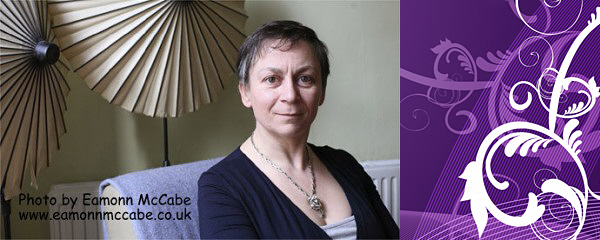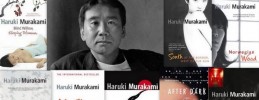
What makes a good short story?
In ‘The Long and the Short of it’, published in The Sunday Times, AS Byatt stated that ‘A good short story is always working towards its end’ (March 2010). I kept this comment in mind when re-reading the stories of Anne Enright.
Anne Enright was born in Dublin in 1962 and followed the well-known MA in Creative Writing at the University of East Anglia. She has worked as a television producer and a broadcaster, has written four novels, winning the Man Booker Prize for Fiction in 2007 with The Gathering and the popular non-fiction book on motherhood Making Babies. She has published 3 collections of short stories: the portable virgin, Taking Pictures and Yesterday’s Weather which gathers together tales she has written over the past 19 years. Enright’s stories do not always work towards their ends since often, it seems, they have no ends or certainly no endings.
An analysis of her first collection, the portable virgin, reveals pages of short chunks of prose written under each title. This promises, and sometimes delivers, un-joined-up scenarios rather than complete tales. The title story, about a bottle shaped like the Virgin Mary and full of holy drinking water, (I wondered whether ‘portable’ is a play on the French phrase ‘l’eau pour table’) is composed of 23 such chunks, one only 2 lines long. An innovative way of presenting narrative perhaps? The shortest of these stories is composed of 4 paragraphs and, by any yardstick, is not even a collection of ideas, merely a string of sentences. On the Man Booker Prize website, Enright says of her writing, ‘I think the way I make sentences is possibly distinctive.’ So is the way she makes stories, which raises the question ‘Is the short story form undergoing a metamorphosis?’
The title of the book Taking Pictures maybe gives a clue to Enright’s intentions. These ‘snapshots of life’ are not presented in chunks of prose but written in traditional narrative style. Well, more or less traditional style. The story ‘Green’, for instance, begins with the sentence ‘I like Gertie but, she just doesn’t get it.’ A promising opening. ‘Green’ is about a woman who runs an organic market garden and her rivalry with former school chum Gertie who owns a posh restaurant. In the country of this story even a mutilated sycamore tree is described as ‘half alive.’ The story finishes with the line, ‘And maybe, as I fall asleep, me also, floating in there, utterly still amidst the green.’ Hardly a resolution but then, apart from the suggestion of a vague conflict about the availability of veg, where was the drama? Forget Aristotle with his four compartments of a story and think any woman who watches and notices the weirdness of folk.
Reviewers have described Enright’s writing as bleak. She does focus on disappointed women in negative situations. The reader meets many people who are either dead or nearly dead. Maybe Enright’s thesis is that life has no resolution except death and death is hardly satisfactory.
I was particularly interested in a story called ‘Until the Girl Died’, commissioned by BBC Radio and included in her collection Taking Pictures. ‘Until the Girl Died’ examines a woman coming to terms with her husband’s habitual adultery. Not a fun situation but Enright is successfully funny about it.
What do men call their wives? ‘Em…’ like every woman on the planet was Christened Emily. ‘Em… is that shirt clean?
She talks about the boring stuff of life to throw light on the important issues often glossed over. For instance, writing about a marriage going through a bad patch she says:
We had the salmon when he came home. Potatoes. A bit of asparagus.
‘Lovely,’ says my husband. ‘Delicious.’ Then he gets up and makes himself a sausage sandwich, cold from the fridge. Butter, mayonnaise, the lot.
And I say, ‘Why don’t you stick some lard in there, while you’re at it?’
If she often uses her stories to express a women’s lib point of view, she also often hits the right note. In ‘Until the Girl Died’, the wife’s final reaction to the death of her husband’s latest lover is:
She did not matter to him, I know that. I know she did not matter. So I went to the cemetery and sought out her grave. I wandered through the headstones until I found her, and I put the lilies on the ground under which she lay and I told her that she mattered.
‘Until the Girl Died’ is a story with characters in conflict, a crisis and a resolution and gives a satisfaction in a way some of her ‘slice of life’ stories do not.
Read the stories of Anne Enright. They might not always give you what you expect from a short story but you will enjoy many of them, they will make you think and they might set you on a new way of writing.

